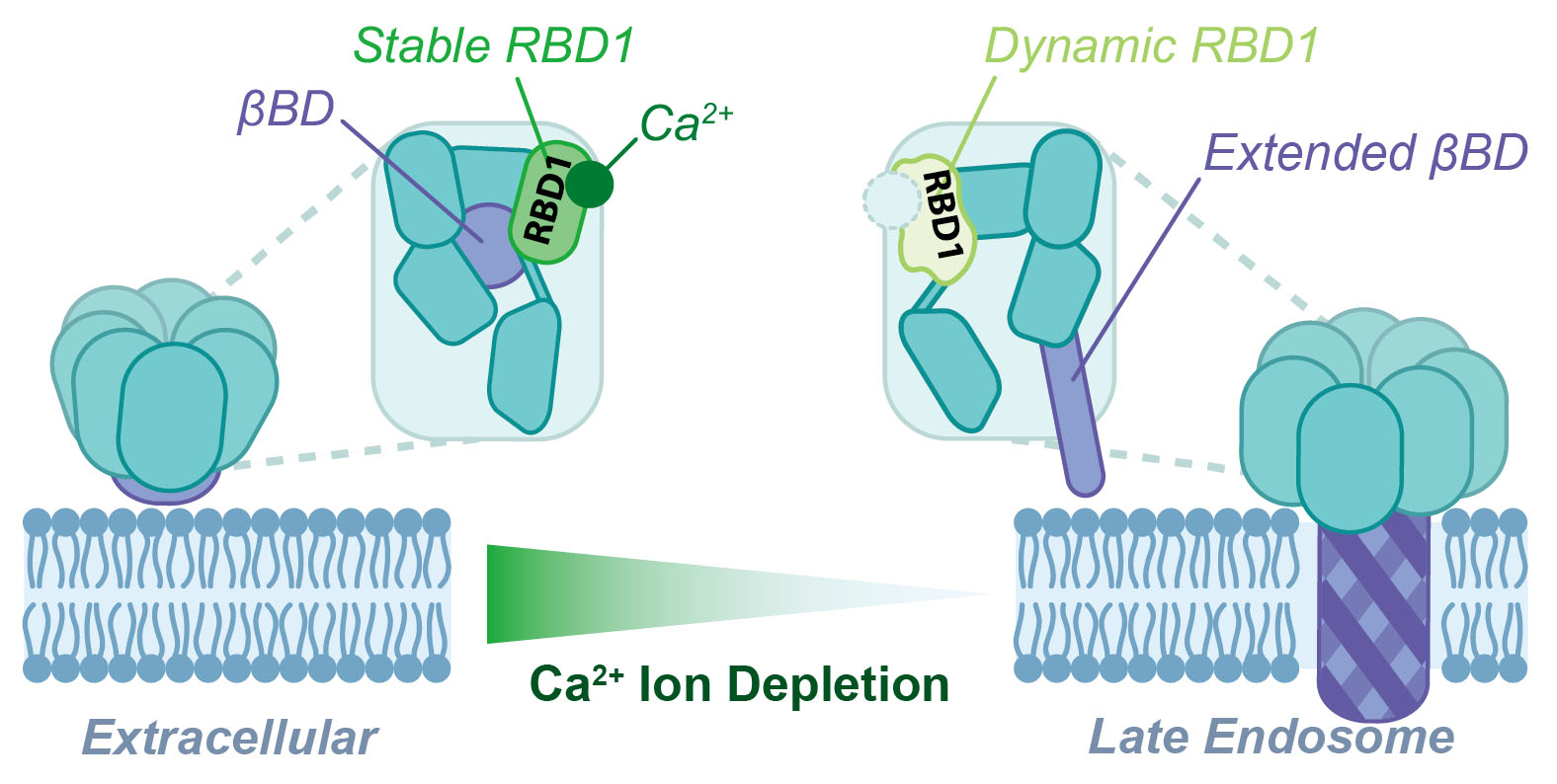Researchers Uncover How C. difficile’s Deadliest Toxin Breaks Into Cells
Thu, Aug 7, 2025

A new study has uncovered key details about how one of the most urgent bacterial threats, Clostridioides difficile infection, causes damage inside the human body. This bacterium infects the colon, causing diarrhea and inflammation among other uncomfortable symptoms, and leads to as many as 15,000 deaths per year in the United States alone.
Although there are existing treatments that target two of the primary toxins produced by C. difficile, CDT is a third toxin secreted by certain hypervirulent strains for which no approved treatment by the Food & Drug Administration (FDA) currently exists. CDT is a binary toxin, meaning it is composed of two main parts: CDTa damages host cells, and CDTb facilitates the toxin’s delivery into host cells. Thus, understanding how CDTb operates is essential for developing a therapeutic and/or vaccine to block it.
Many toxins in the same family as CDT activate when they encounter acidic environments inside cell compartments called endosomes. This acidic shift typically flips a molecular switch in these toxins, triggering them to attack the host cell. However, a recent study published in Communications Biology, entitled “Pore formation by the CDTb component of the Clostridioides difficile binary toxin is Ca2+-dependent,” has revealed that CDT behaves quite differently. Instead of relying on acidity, CDTb uses a calcium-based switch to activate, enter, and damage host cells - a novel mechanism among binary toxins.
The study explored how CDT capitalizes on the dramatic drop in calcium (Ca²⁺) levels that occurs when it enters endosomes. Using advanced structural biology techniques, researchers were able to visualize this process in fine detail. They discovered that the decrease in Ca²⁺ makes CDTb more flexible, enabling it to pierce the host cell membrane and form a tunnel-like structure through the host cell membrane, which CDTa can then enter through.
As scientists continue to uncover the intricate mechanisms of infection, opportunities arise for developing more effective treatments. This new understanding of how CDT operates not only highlights a unique activation mechanism but also opens the door for future research into other physiological triggers of toxicity and ultimately, new ways to combat C. difficile infections as well as other infections that may also have toxins with a similar “triggering” mechanism for attacking its host.


